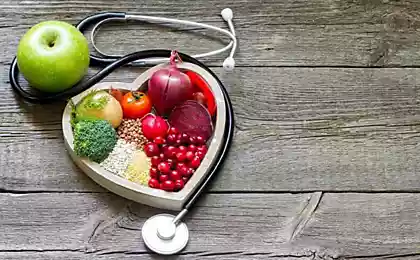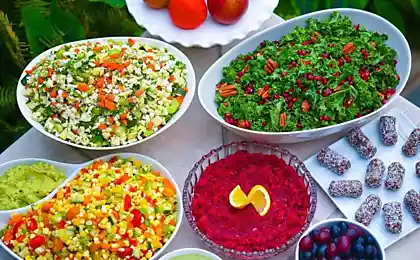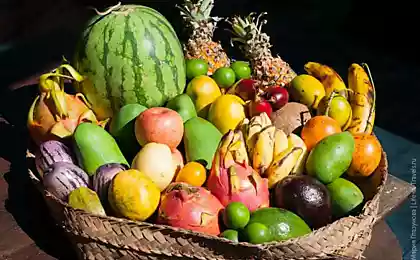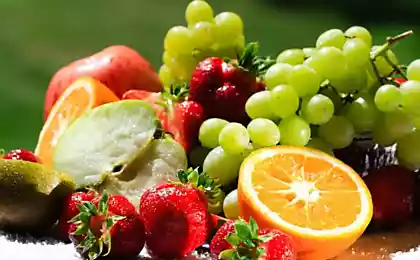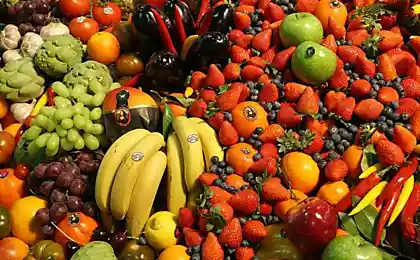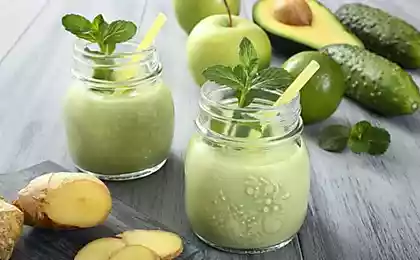8997
Fruits with the exotic appearance
In our world, there are still a lot of interesting and unusual. Sometimes you look and just amazed. What if it turns out to be another extraordinary miracle tasty and healthy?
Let's look at the fruits, which are difficult to find in the market or supermarket, and that change all the ideas about how food should look like.
Now, being in another country and seeing on the counter of the local shops one of these exotic fruits, you can not puzzle over, as if to inquire what it is and what is eaten, and safely proceed to the tasting.
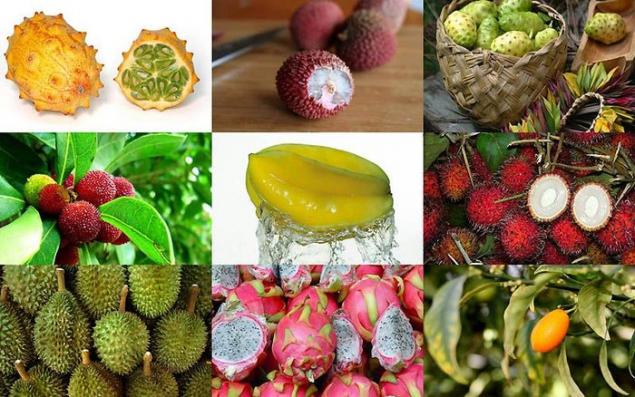
1. In India, Sri Lanka, Philippines and some other countries in the Southeast Asia grow fruit carambola, nicknamed because of its original form the star fruit (starfruit). Star fruit is similar to the only cross-sectioned form in which it usually is used for decorating desserts and cocktails. Mature carambola, depending on the variety, can be sweet and sour or sweet taste, which is compared with a mixture of apple, pear and citrus. The pulp of the fruit, which is under the wax crust, the structure resembles a plum - it is the same juicy and slightly crispy. Star fruit is an excellent source of vitamin C and antioxidants. As in grapefruit in Cannon contains large amounts of oxalic acid, so people with diseased kidneys fruit should not be abused.

2. Pitaya or Dragon Fruit grows on climbing lianoobraznyh cacti that are common in Mexico and South America. The cultivation of this fruit are engaged and in Australia and in South-East Asia. There are several varieties of dragon fruit, depending on the accessories to which the color of the skin may be red-pink to yellow and flesh color from white to red. Pitaya weight can vary from 150 grams to kilograms. The fruit has a sweet taste, which according to some reviews seem deflating. But because of its low calorie, and high content of vitamin C, phosphorus and potassium, pitahaya useful for people with active lifestyles. And, but you need to be frightened if after eating dragon fruit with red flesh your urine became red. This is completely harmless phenomenon called psevdogematuriya that quickly passes.
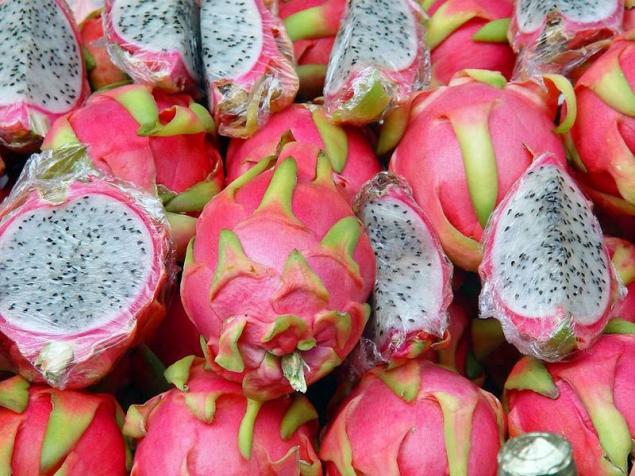
3. And this spherical fruit with thorns, the diameter of which can reach 30 cm and weighs 5 kg, called durian. In South-East Asia can be found more than three dozen varieties of durian, edible but only 9 of them, and they smell a little like the fact that you can eat. It is because of the smell, like a mixture of turpentine and rancid onions and cheese, in some countries it is forbidden to appear with the fruits of durian in public areas. But, despite the smell, yellow and red pulp of the fruit is very palatable and reminiscent of a mixture of cream, banana and egg yolk. Durian contains high amounts of vitamins and minerals, is an aphrodisiac, but is contraindicated in hypertensive patients, since it increases the blood pressure.
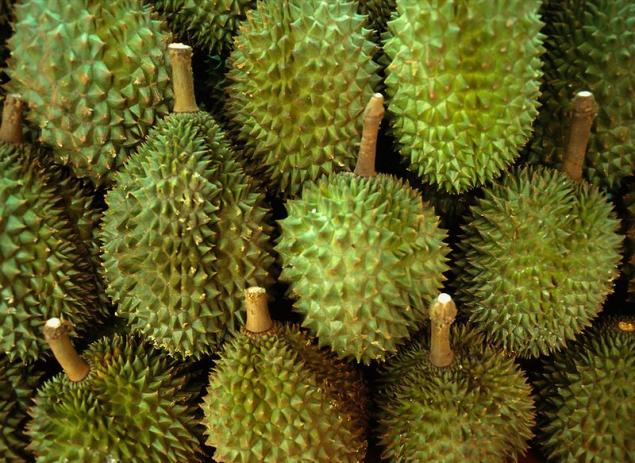
4. Homeland mountain peach or yangmeya, also known as Chinese strawberries is East Asia. In China, Youngman is grown for over 2000 years. Chinese strawberries is not big in size - only 1, 5 - 2, 5 cm in diameter, often dark red or brown-red color. The taste of this fruit is rather specific - both sweet and tart. Youngman excellent antioxidant. Trees, which grow fruit often grown for ornamental decoration of parks and gardens.

5. Fruits Marinda tsitrusolistnoy or noni little resemblance to the fruit, they are more like a potato. The birthplace of noni - South Asia. Ripe fruit of Noni have a white or light yellow color and up to 7 cm in length. The smell of the fruit resembles moldy cheese. Apparently so noni fruit is sometimes called cheese. Despite the bitter taste and odor of noni is quite popular in Asia. Most likely, it is connected with the fact that in the fruit contains many vitamins and minerals. In traditional medicine used for treating fruit bowel cramps and urinary tract infections.
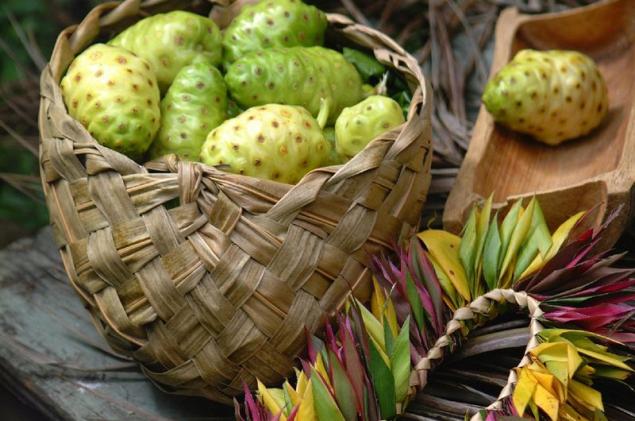
6. Homeland Rambutan is the Malay Archipelago. The appearance of this red fruit with a lot of processes explains its name (rambut translated from Indonesian - "Hair"). Rambutan fruits are small (about 3 cm in diameter) and grow in clusters. The pulp of the fruit resembles a jelly-like mass of yellow-white color, sweet taste and is rich in vitamin C, calcium, phosphorus and iron.

7. Champion fruit size fruits that grow on trees - jackfruit (Indian breadfruit). Ripe fruit zhitsya kolichestvoimeyut large yellow-green, up to 90 cm in diameter and up to 35 kg of weight. The pulp dzhekfrukta very nutritious and taste like a fruit gum, which is not surprising, since it contains a sticky white latex. Most jackfruit common in South India.

8. Lychee (dragon eye) - one of the most popular fruit in Southeast Asia. Under tight pinkish or red crust hides a small white flesh fruit, texture reminiscent of grapes and dark elongated bone, similar to the pupil of the animal. The taste of sweet litchi, with a little sour. Fruit is rich in vitamin C, is an aphrodisiac.

9. mangosteen Mangosteen or as many exotic fruits, mainly grows in Southeast Asia. Under the maroon-purple white crust hiding slices of flesh. The taste of the fruit is sweet and creamy few tart. Mangosteen is rich in vitamins B and C, phosphorus and calcium. He is a very effective antioxidant.
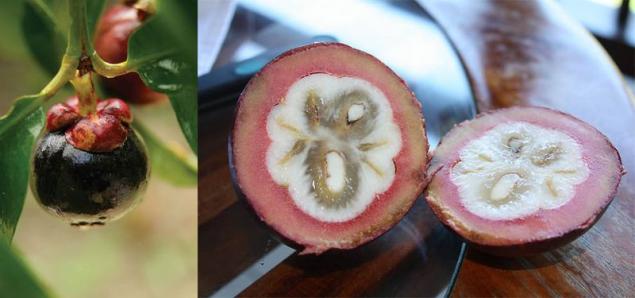
10. Little Golden elongated apelsinchik comes from China called kumquat. There they can chat with a crust, and tastes like sour tangerine. The fruit can be grown as a houseplant. Kumquat is rich in vitamins C, P, and B-group. Drinking kumquat helps get rid of depression, stress, colds and hangovers.
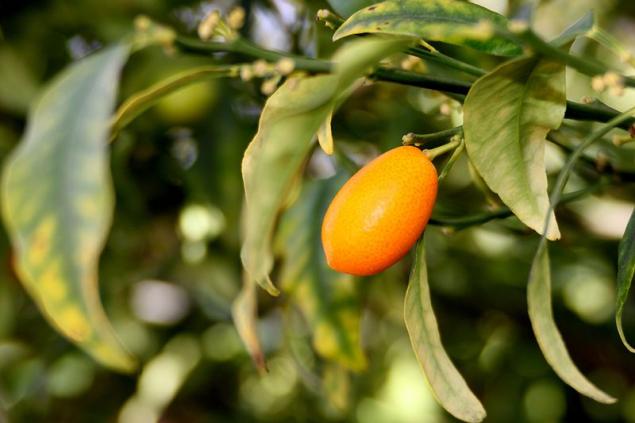
11. And finally, nods or horned melon. Kiva is home to Africa, so it is sometimes called "African cucumber." Ripe fruit is yellow or orange-red color and reaches about 15 cm in length. The pulp nods, green and jelly, tastes like a mixture of banana and cucumber. Fruit is rich in vitamin C, potassium and contains iron and low in calories, boosts the immune system and strengthens blood vessels.
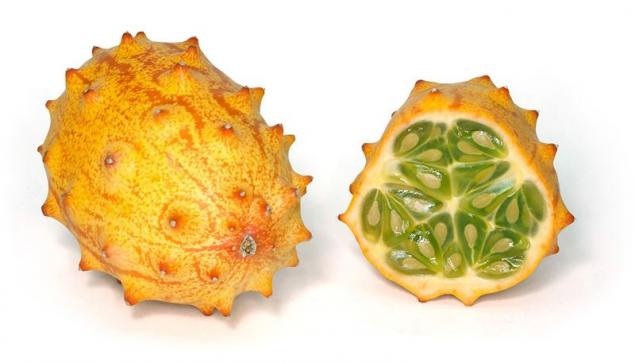
Perhaps there are people and try litsezrevshie described, or even more original and fruits, as shown only a portion of unusual fruits, which are quite exotic for our country
via Source
Let's look at the fruits, which are difficult to find in the market or supermarket, and that change all the ideas about how food should look like.
Now, being in another country and seeing on the counter of the local shops one of these exotic fruits, you can not puzzle over, as if to inquire what it is and what is eaten, and safely proceed to the tasting.

1. In India, Sri Lanka, Philippines and some other countries in the Southeast Asia grow fruit carambola, nicknamed because of its original form the star fruit (starfruit). Star fruit is similar to the only cross-sectioned form in which it usually is used for decorating desserts and cocktails. Mature carambola, depending on the variety, can be sweet and sour or sweet taste, which is compared with a mixture of apple, pear and citrus. The pulp of the fruit, which is under the wax crust, the structure resembles a plum - it is the same juicy and slightly crispy. Star fruit is an excellent source of vitamin C and antioxidants. As in grapefruit in Cannon contains large amounts of oxalic acid, so people with diseased kidneys fruit should not be abused.

2. Pitaya or Dragon Fruit grows on climbing lianoobraznyh cacti that are common in Mexico and South America. The cultivation of this fruit are engaged and in Australia and in South-East Asia. There are several varieties of dragon fruit, depending on the accessories to which the color of the skin may be red-pink to yellow and flesh color from white to red. Pitaya weight can vary from 150 grams to kilograms. The fruit has a sweet taste, which according to some reviews seem deflating. But because of its low calorie, and high content of vitamin C, phosphorus and potassium, pitahaya useful for people with active lifestyles. And, but you need to be frightened if after eating dragon fruit with red flesh your urine became red. This is completely harmless phenomenon called psevdogematuriya that quickly passes.

3. And this spherical fruit with thorns, the diameter of which can reach 30 cm and weighs 5 kg, called durian. In South-East Asia can be found more than three dozen varieties of durian, edible but only 9 of them, and they smell a little like the fact that you can eat. It is because of the smell, like a mixture of turpentine and rancid onions and cheese, in some countries it is forbidden to appear with the fruits of durian in public areas. But, despite the smell, yellow and red pulp of the fruit is very palatable and reminiscent of a mixture of cream, banana and egg yolk. Durian contains high amounts of vitamins and minerals, is an aphrodisiac, but is contraindicated in hypertensive patients, since it increases the blood pressure.

4. Homeland mountain peach or yangmeya, also known as Chinese strawberries is East Asia. In China, Youngman is grown for over 2000 years. Chinese strawberries is not big in size - only 1, 5 - 2, 5 cm in diameter, often dark red or brown-red color. The taste of this fruit is rather specific - both sweet and tart. Youngman excellent antioxidant. Trees, which grow fruit often grown for ornamental decoration of parks and gardens.

5. Fruits Marinda tsitrusolistnoy or noni little resemblance to the fruit, they are more like a potato. The birthplace of noni - South Asia. Ripe fruit of Noni have a white or light yellow color and up to 7 cm in length. The smell of the fruit resembles moldy cheese. Apparently so noni fruit is sometimes called cheese. Despite the bitter taste and odor of noni is quite popular in Asia. Most likely, it is connected with the fact that in the fruit contains many vitamins and minerals. In traditional medicine used for treating fruit bowel cramps and urinary tract infections.

6. Homeland Rambutan is the Malay Archipelago. The appearance of this red fruit with a lot of processes explains its name (rambut translated from Indonesian - "Hair"). Rambutan fruits are small (about 3 cm in diameter) and grow in clusters. The pulp of the fruit resembles a jelly-like mass of yellow-white color, sweet taste and is rich in vitamin C, calcium, phosphorus and iron.

7. Champion fruit size fruits that grow on trees - jackfruit (Indian breadfruit). Ripe fruit zhitsya kolichestvoimeyut large yellow-green, up to 90 cm in diameter and up to 35 kg of weight. The pulp dzhekfrukta very nutritious and taste like a fruit gum, which is not surprising, since it contains a sticky white latex. Most jackfruit common in South India.

8. Lychee (dragon eye) - one of the most popular fruit in Southeast Asia. Under tight pinkish or red crust hides a small white flesh fruit, texture reminiscent of grapes and dark elongated bone, similar to the pupil of the animal. The taste of sweet litchi, with a little sour. Fruit is rich in vitamin C, is an aphrodisiac.

9. mangosteen Mangosteen or as many exotic fruits, mainly grows in Southeast Asia. Under the maroon-purple white crust hiding slices of flesh. The taste of the fruit is sweet and creamy few tart. Mangosteen is rich in vitamins B and C, phosphorus and calcium. He is a very effective antioxidant.

10. Little Golden elongated apelsinchik comes from China called kumquat. There they can chat with a crust, and tastes like sour tangerine. The fruit can be grown as a houseplant. Kumquat is rich in vitamins C, P, and B-group. Drinking kumquat helps get rid of depression, stress, colds and hangovers.

11. And finally, nods or horned melon. Kiva is home to Africa, so it is sometimes called "African cucumber." Ripe fruit is yellow or orange-red color and reaches about 15 cm in length. The pulp nods, green and jelly, tastes like a mixture of banana and cucumber. Fruit is rich in vitamin C, potassium and contains iron and low in calories, boosts the immune system and strengthens blood vessels.

Perhaps there are people and try litsezrevshie described, or even more original and fruits, as shown only a portion of unusual fruits, which are quite exotic for our country
via Source





